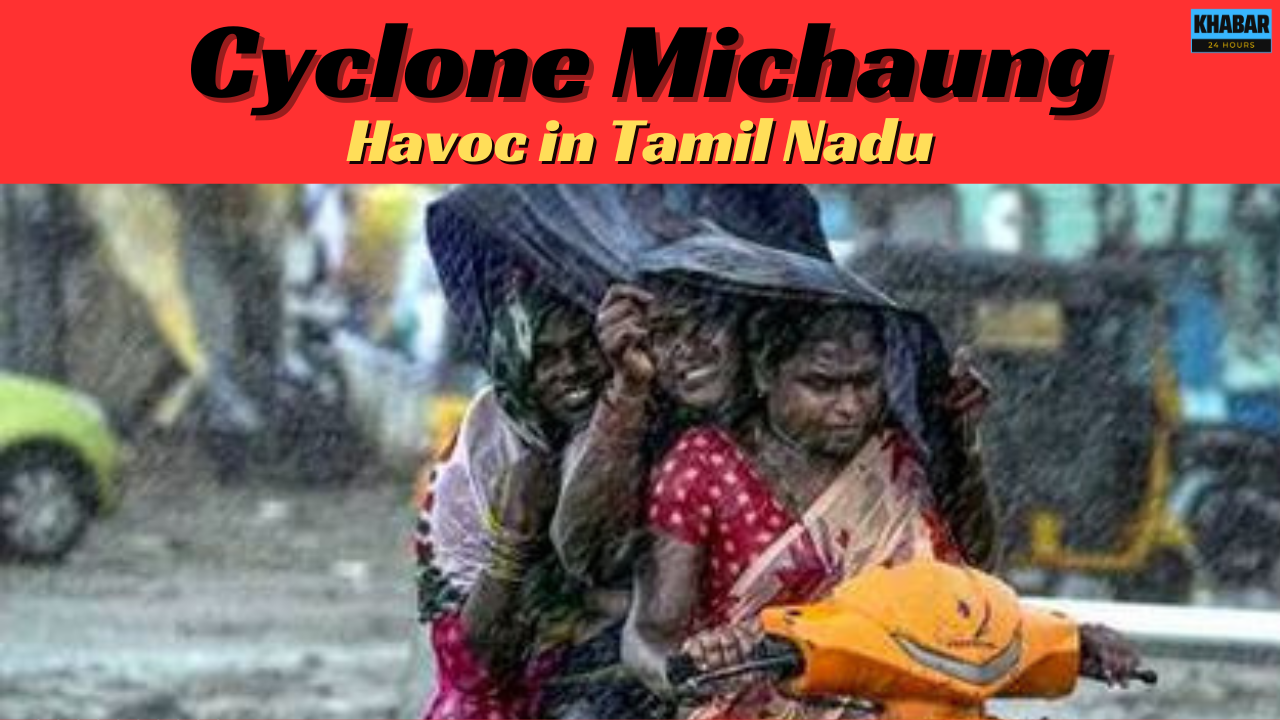Cyclone Michaung Wreaks Havoc in Tamil Nadu, Triggers Heavy Rainfall
Cyclone Michaung, a severe cyclonic storm that formed over the Bay of Bengal, unleashed its fury on the coastal districts of Tamil Nadu, India, on December 4, 2023. The storm brought heavy rainfall, strong winds, and rough seas, causing widespread damage and disruption to life in the region.
Cyclone’s Path of Destruction
Cyclone Michaung made landfall near Nellore in Andhra Pradesh on Monday morning, bringing with it sustained winds of up to 100 kilometers per hour (62 miles per hour). The storm surge, the rise in sea level due to the storm’s winds, inundated coastal areas, causing flooding and damage to property.
Heavy rainfall triggered by the cyclone, exceeding 200 millimeters (7.9 inches) in some areas, led to flash floods and landslides. Several rivers in the region breached their banks, submerging agricultural lands and disrupting transportation.
Impacts on Infrastructure and Services
The cyclone caused widespread power outages, disrupting daily life and hindering rescue and relief operations. Communication networks were also affected, making it difficult for people to stay connected and seek help.
Several airports in the region were forced to shut down due to the severe weather conditions, stranding hundreds of passengers. Rail and road transportation was also disrupted, with several trains canceled and roads blocked due to fallen trees and debris.
Relief and Rescue Efforts
State and central government agencies swung into action to provide relief and assistance to the affected communities. Disaster response teams were deployed to evacuate people from flooded areas and distribute essential supplies. Medical teams were also mobilized to provide medical care to those affected by the cyclone.
The Indian Navy and Coast Guard were actively involved in search and rescue operations, assisting stranded fishermen and rescuing people from flooded areas. The Air Force also assisted in relief efforts, airlifting essential supplies and transporting emergency personnel.
Lessons Learned and Preparedness for Future Cyclones
Cyclone Michaung served as a stark reminder of the destructive power of cyclones and the need for communities to be prepared for such disasters. Early warning systems, timely evacuation plans, and resilient infrastructure are crucial for minimizing the impact of cyclones.
Communities living in cyclone-prone areas should regularly undergo cyclone preparedness drills and stay informed about weather updates. Having an emergency plan in place, including identification of safe shelters and stocking up on essential supplies, can make a significant difference in managing the impact of cyclones.
In conclusion, Cyclone Michaung highlighted the importance of disaster preparedness and resilience in mitigating the impact of natural disasters. By investing in early warning systems, effective disaster management strategies, and building resilient infrastructure, communities can minimize the loss of life and property caused by cyclones.

